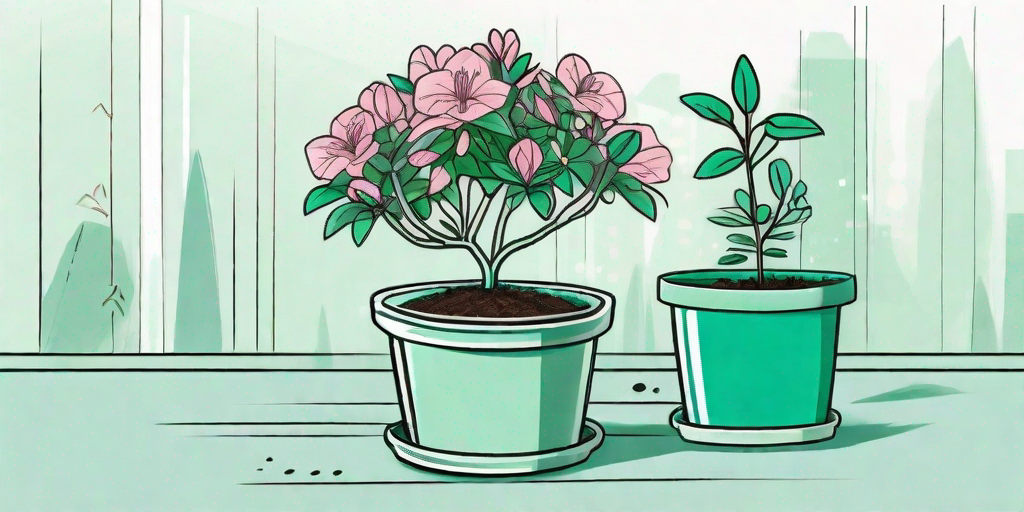
Greetings, budding gardeners and azalea enthusiasts! Welcome to the wonderful world of azaleas, where the blooms are vibrant, the leaves are evergreen, and the roots are, well, rooty. If you're here, it means you're ready to embark on the exciting journey of transplanting these beauties. Buckle up your gardening gloves, because we're about to dig deep!
Understanding Azaleas: The Basics
Before we dive into the dirt, let's take a moment to appreciate the azalea in all its glory. These shrubs, part of the Rhododendron family, are known for their stunning springtime blooms and their love for shade. They're like the introverted supermodels of the plant world.
There are over 10,000 different types of azaleas, ranging from the bright and bold to the subtle and understated. But no matter the variety, all azaleas have one thing in common: they're a bit finicky when it comes to their living conditions. But don't let that scare you off! With a little knowledge and a lot of love, you'll be a master azalea transplanter in no time.
Choosing the Right Azalea
With so many varieties to choose from, picking the right azalea can feel like trying to find a needle in a haystack. But don't worry, we've got some tips to help you out. First, consider your climate. Azaleas love mild temperatures and aren't fans of extreme heat or cold. Second, think about the color scheme of your garden. Azaleas come in a rainbow of colors, so you're sure to find one that complements your existing plants.
Finally, consider the size of the azalea. Some varieties can grow up to 8 feet tall, while others are more compact. Make sure you have enough space for your new plant to grow and thrive. Remember, an azalea is not just for Christmas, it's a long-term commitment!
Preparing for Transplantation
Now that you've chosen your azalea, it's time to prepare for the big move. Transplanting can be stressful for plants, so it's important to do everything you can to make the process as smooth as possible.
First, choose the right time to transplant. Azaleas are best moved in the early spring or early fall, when temperatures are mild and rainfall is plentiful. This gives the plant plenty of time to establish its roots before the stress of summer heat or winter cold.
Choosing the Right Location
Azaleas are a bit like Goldilocks when it comes to sunlight - they like it not too hot, not too cold, but just right. A spot with partial shade, such as under the canopy of tall trees, is ideal. Too much sun can scorch the leaves, while too little can result in sparse flowering.
Next, consider the soil. Azaleas prefer well-drained, acidic soil with a pH between 4.5 and 6.0. If your soil is more alkaline, you can lower the pH by adding sulfur or peat moss.
Preparing the Plant
Before you move your azalea, give it a good watering. This will help to reduce transplant shock and make it easier to remove the plant from its current location. If the plant is large, you may need to prune it back to make it more manageable. Don't worry, azaleas are tough and will bounce back quickly!
The Transplantation Process
Alright, it's go time! Grab your shovel, put on your favorite gardening hat, and let's get this azalea moving.
Start by digging a hole in your chosen location. The hole should be twice as wide as the root ball of your azalea and just as deep. This gives the roots plenty of room to spread out and establish themselves in their new home.
Step-by-Step Guide
- Water the azalea thoroughly a day before the move.
- Dig a hole in the new location, twice as wide and just as deep as the root ball.
- Carefully dig up the azalea, trying to keep as much of the root ball intact as possible.
- Place the azalea in the hole, making sure the top of the root ball is level with the ground.
- Backfill the hole with soil, firming it gently around the base of the plant.
- Water the azalea thoroughly, then mulch around the base to conserve moisture and suppress weeds.
Post-Transplant Care
Phew, the hard part is over! But don't hang up your gardening gloves just yet. Your azalea will need some TLC to help it settle into its new home.
Water your azalea regularly, especially during dry spells. Azaleas have shallow roots, so they dry out quickly. A layer of mulch can help to conserve moisture and keep the roots cool.
It's also a good idea to feed your azalea with a slow-release, acid-forming fertilizer in the spring. This will help to promote healthy growth and abundant flowering.
Frequently Asked Questions
When is the best time to transplant azaleas?
The best time to transplant azaleas is in the early spring or early fall, when temperatures are mild and rainfall is plentiful.
How often should I water my transplanted azalea?
Water your transplanted azalea regularly, especially during dry spells. A layer of mulch can help to conserve moisture and keep the roots cool.
What kind of soil do azaleas prefer?
Azaleas prefer well-drained, acidic soil with a pH between 4.5 and 6.0. If your soil is more alkaline, you can lower the pH by adding sulfur or peat moss.
And there you have it, folks! A comprehensive guide to transplanting azaleas. With a little patience and a lot of love, you'll have a garden full of vibrant, blooming azaleas in no time. Happy gardening!















